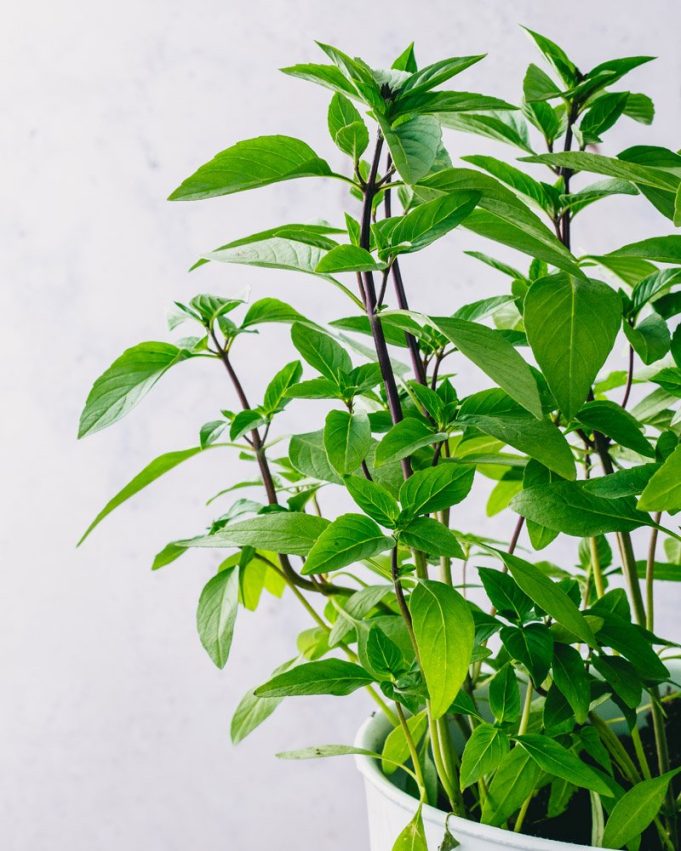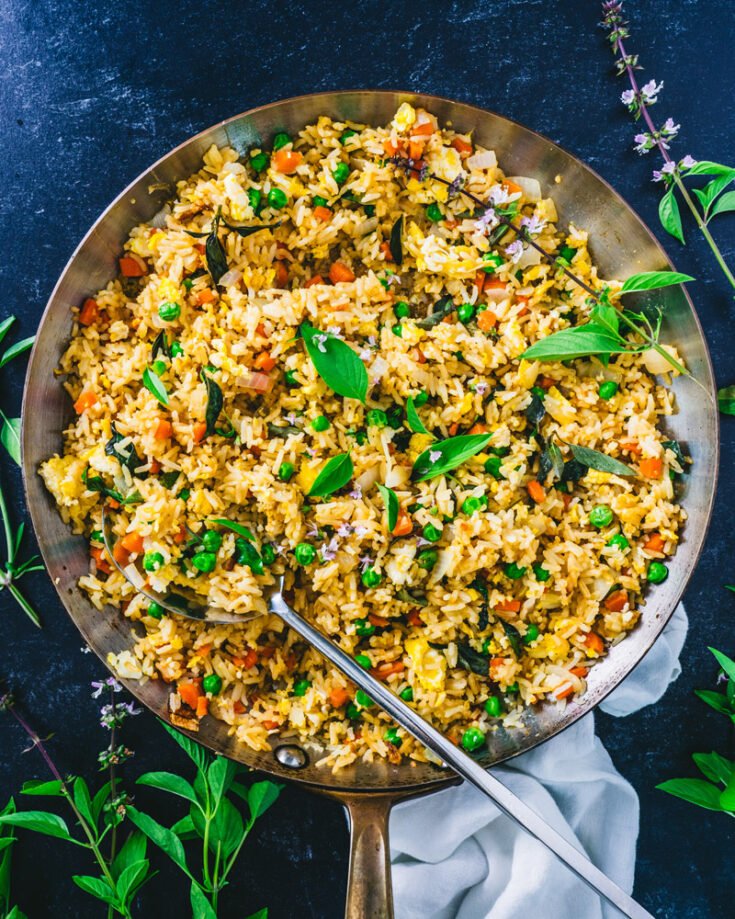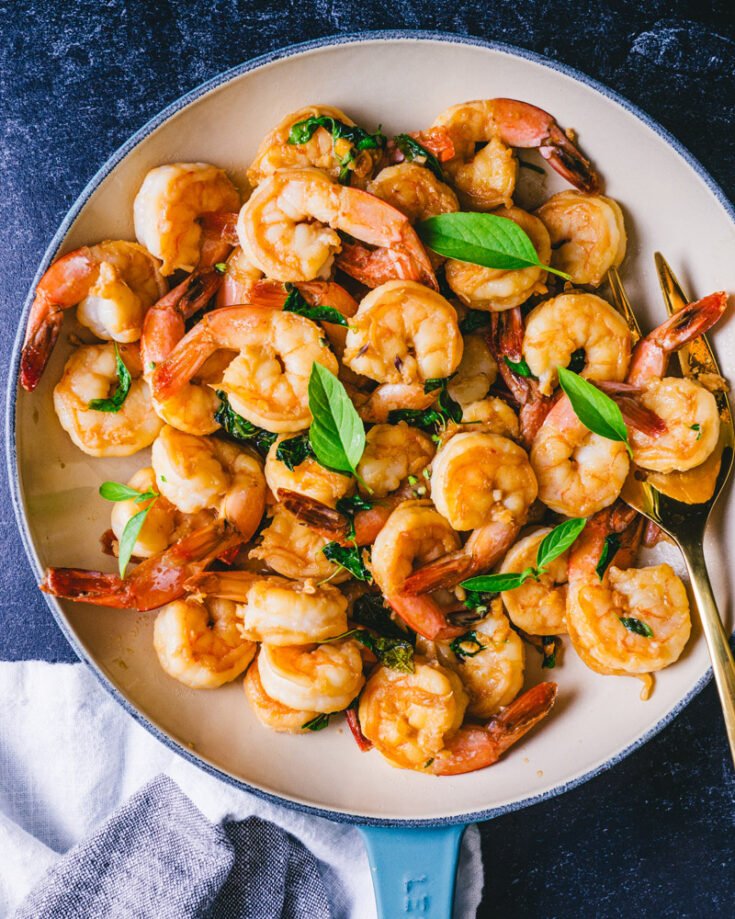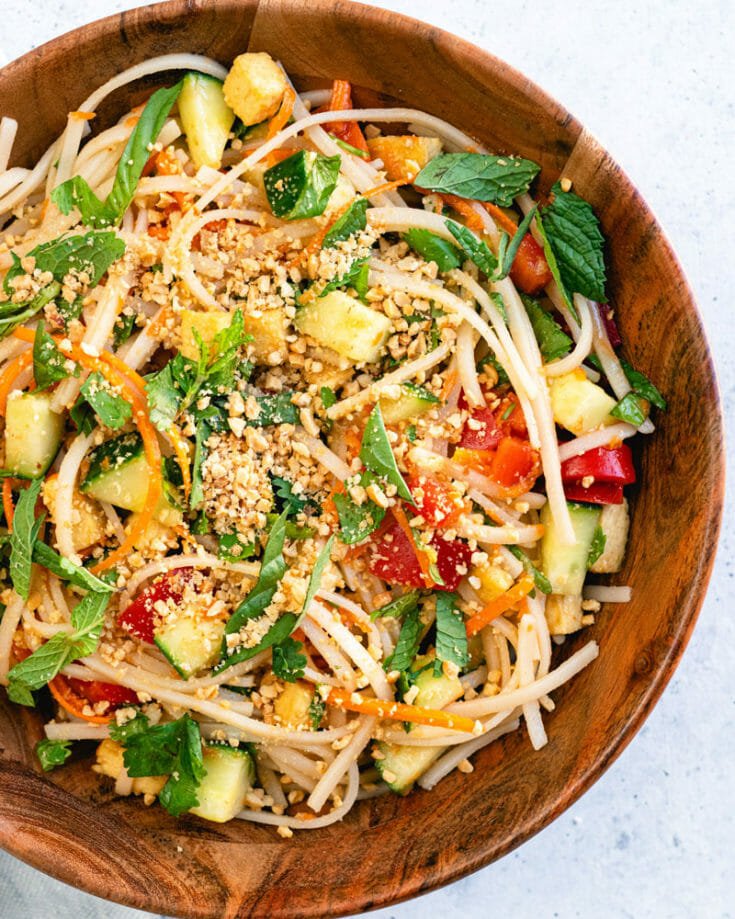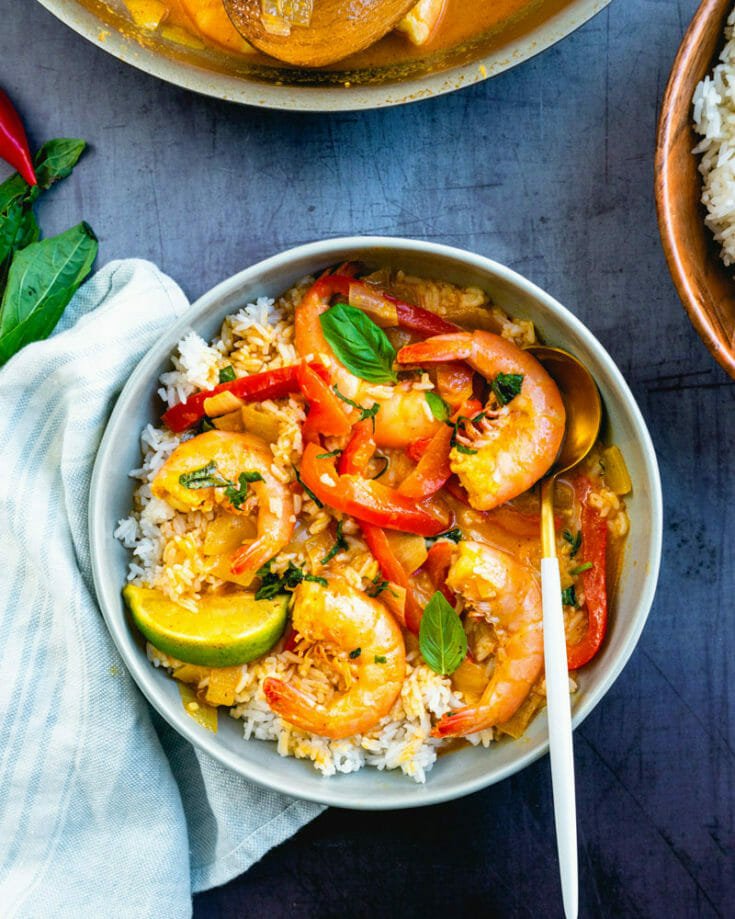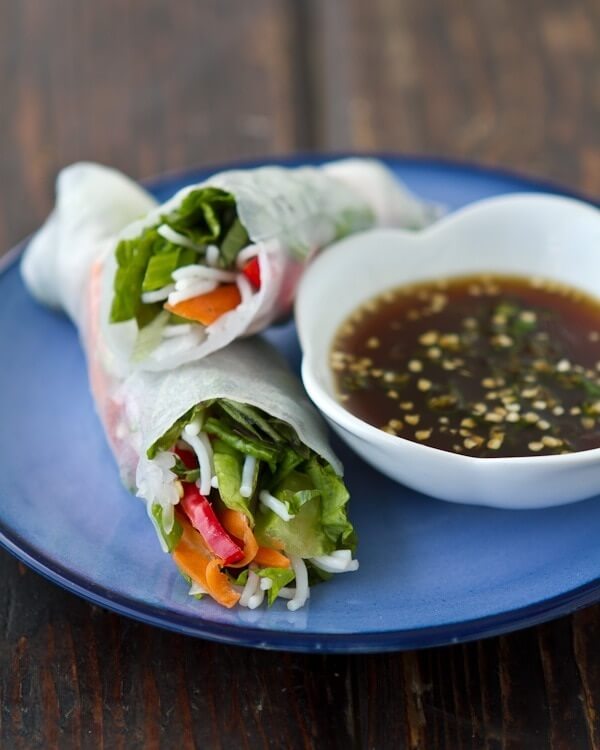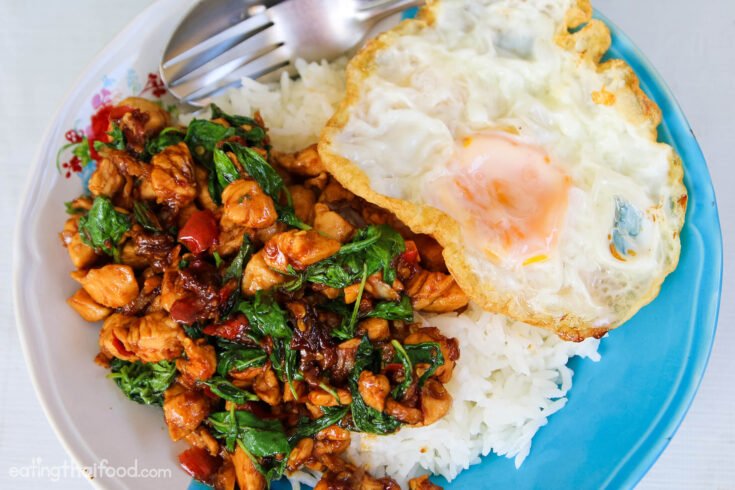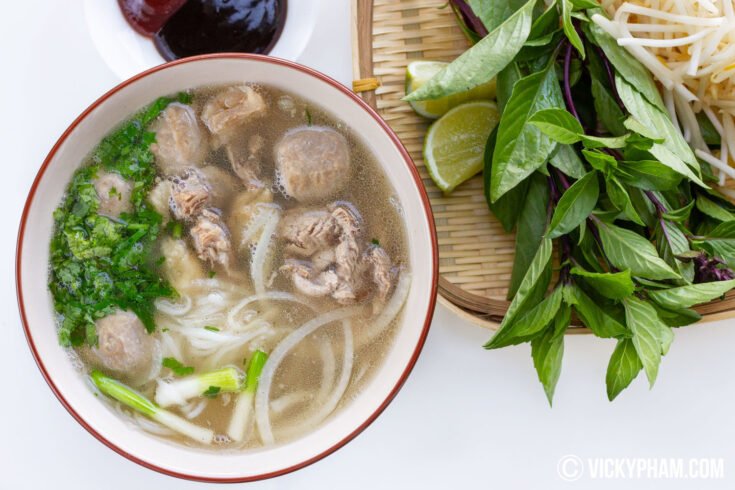Here’s what you need to know about Thai basil! There are so many uses, whether you grow this herb fresh or find it at the store.
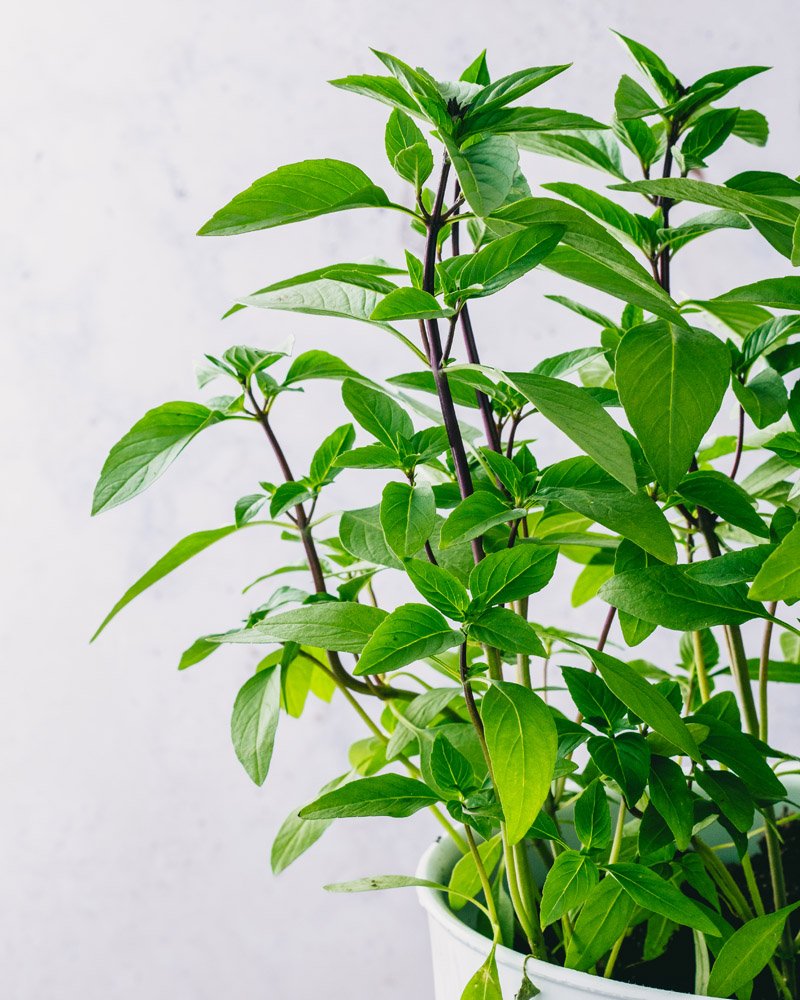
It’s shiny, beautiful, and has a lovely purple stem: it is Thai basil! This fresh herb belongs to the same family as the sweet basil, which is responsible for pesto and the legendary margherita pizza. But it is distinctly different in several respects. Use this Southeast Asian variety for your pho and spring rolls: the taste is intensely aromatic and definitely worth searching for. It’s also great for growing in the summer! Here’s a little more about this tasty herb and its culinary uses.
What is Thai basil?
Thai basil is a type of basil that tastes like aniseed or black liquorice and is native to Southeast Asia. It has a purple stem, purple flowers, and thin dark green leaves. As the name suggests, it is used in Southeast Asian cuisine, including Thai, Cambodian, Lao, and Vietnamese recipes. You’ll find it in curries, spring rolls, pasta bowls, and more.
Where to find it Thai basil is easy to grow at home, which we recommend during the growing season as it’s fresher and more economical! Or you can find it in international grocery stores or Asian markets.
Are There Substitutes for Thai Basil? You can substitute sweet basil in some recipes if that’s all you have on hand. But it’s worth looking for a traditional Southeast Asian recipe like curry, pho, or spring rolls.
Thai Basil vs. Basil: The Difference!
What is the difference between Thai basil and sweet basil? How to distinguish the two:
- Thai basil has a purple stem and narrow, ribbed green leaves. The taste has a strong essence of aniseed (black liquorice) with hints of spice on the finish.
- Italian basil has large light green leaves and a green stem. The leaves are larger than the Thai variety and the flavor is milder, with hints of black pepper and subtle anise.
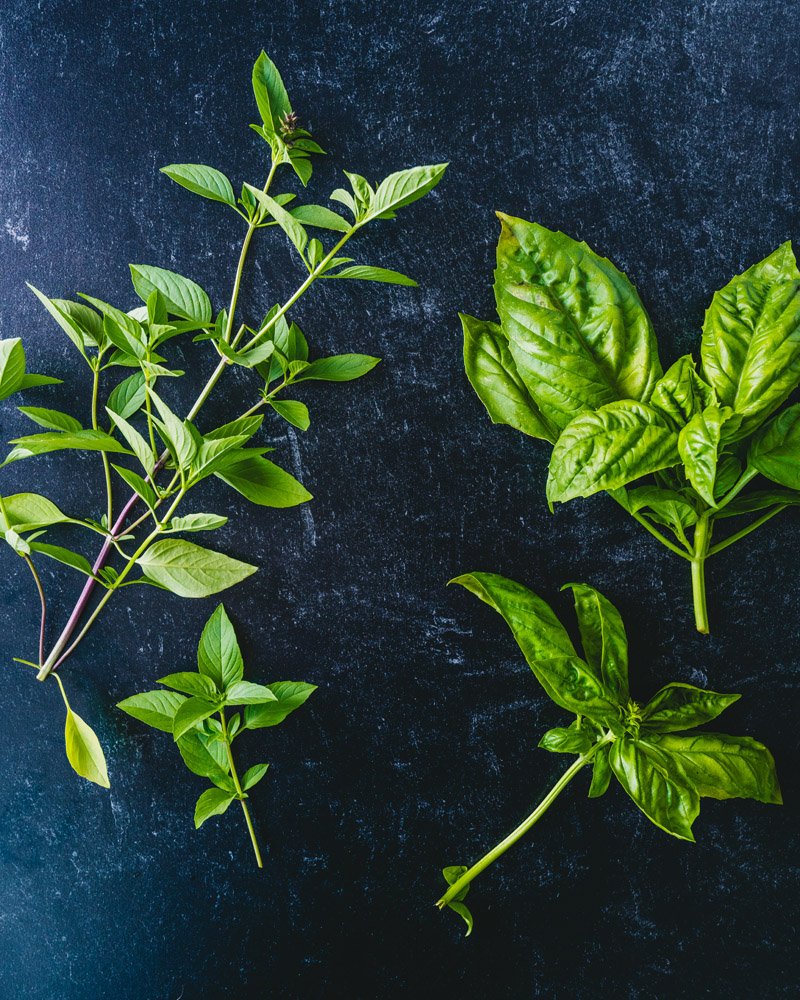
Growing Thai Basil: Some Tips!
The cultivation of Thai basil is similar to Italian basil. She won’t grow as tall and bushy as the Thai strain stays more compact. Otherwise it is very similar! Here are some best practices for growing this fresh herb:
- Purchase a Thai basil starter plant from a farmer’s market or garden store. This is the most reliable way to breed it.
- Plant basil in full sun in a pot with drainage, a raised bed, or soil. Use potting soil or garden mix to plant basil in a pot. Make sure the pot has holes in the bottom to allow water to drain. If you have a garden, Thai basil does well in raised beds because of the drainage. Place the plant in a location that receives 6 to 8 hours of full sun per day.
- prune the plant regularly. Removing the basil leaves will help the plant branch out, making it a tall, bushy plant. When a branch has six to eight leaves, pinch off the stem and return to the first set of leaves. Be sure to pick and use the leaves regularly: it helps the plant grow! Remove all flowers immediately.
- Water the basil regularly. Keep the soil around the basil moist and water every few days.
storage information
Thai basil is best used fresh. When using it in recipes, harvest a few sprigs of the herb and then remove the leaves. If you harvest too much Thai basil, you can store the cut stems in a jar in the refrigerator. How to store basil:
- Find a large jar and add a few inches of water. Make sure the pot is big enough so the stems don’t get crushed or pushed in.
- Place the basil stalks in the jar, cut side down. Unscrew the lid of the jar, which will help keep the basil fresh.
- Store in the fridge for 3-5 days.
The best Thai basil recipes
How to use Thai basil in recipes? This aromatic herb holds a prominent place in Southeast Asian cuisine. Here are some usage ideas:
Do you have Thai basil? Here’s a great way to use it: Thai Basil Fried Rice! Add it to fried rice and it imparts an irresistible flavor that makes it impossible not to take another bite. It’s a great way to use this herb if you have it on hand.
Get the recipe
One of our favorite ways to use Thai basil in recipes? This Thai Basil Shrimp Skillet! It is flavored with garlic, fresh ginger and soy sauce, with a slight undertone of black liquorice on the finish. It tastes totally spoiled: whipped up on the stove in just a few minutes.
Get the recipe
This delicious bowl of pasta has the flavor of a bowl-shaped spring roll! It’s a taste explosion: tangy lime, fresh herbs and crunchy vegetables. Fresh Thai basil adds a subtle anise flavor.
Get the recipe
There are so many flavors here: rich coconut milk, aromatic curry paste, tangy lime and peppery basil around tender, juicy shrimp. Serve over jasmine rice with Thai basil.
Get the recipe
These fresh vegetable spring rolls are filled with Thai basil, carrots, lettuce, scallions and more! Thai basil makes the dish with its aniseed essence.
Get the recipe
Photo credit:
www.eatingthaifood.com
Thai basil chicken, a.k.a pad kra pao gay, is a popular Thai street food dish that contains this delicious herb. Thai cuisine purists would say that this dish should contain holy basil (a related herb with a different taste), not Thai basil. But many recipes say you can use both.
Continue reading
Photo credit:
www.vickypham.com
Phở is one of the most famous Vietnamese dishes, a steaming and invigorating noodle soup. Authentic pho is often served with a plate of Thai basil to allow eaters to garnish with the best aromatic flavor.
Continue reading
The description
Thai Basil Fried Rice is a delicious way to consume this fragrant herb! Thai basil adds a delicate aniseed flavor to this filling dish.
- 1/2 yellow or white onion
- 2 large cloves of garlic
- 1 tbsp chopped ginger (approx. 1 inch inch)
- 2 big carrots
- 3 tablespoons sesame oil, divided
- 4 eggs
- ½ cup frozen peas
- 4 cups Jasmine Rice cooked, at least 1 day old or chilled using the shortcut below*
- ½ teaspoon kosher salt
- 2 tablespoons soy sauce or tamari
- 1 teaspoon fish sauce
- ⅓ cup Thai basil leaves
- Options: 1 Pound small medium shrimp (size 51 up to 60), peeled and deveined, frozen or fresh**
- Chop the onion. Chop the garlic. Chop the ginger. Peel the carrots, then cut into cubes.
- In a large skillet or wok, heat 2 tablespoons sesame oil over medium-high heat. Sauté carrots and onion for 2 minutes. Add the garlic and ginger and sauté for 1 minute. Stir in the rice, peas and salt for 1 minute.
- Push the rice aside. Add 1 more tablespoon of oil. Add the eggs and a pinch of salt and stir until cooked through, 1-2 minutes.
- Add soy sauce and fish sauce if using. Taste and add additional soy sauce if needed. Heat for a minute or two, stirring, until all of the rice is coated. Add the Thai basil and turn off the heat, stirring until soft. Serve hot.
- Category: main course
- Method: Cook
- Kitchen: Inspired by Southeast Asia
- Diet: vegetarian

